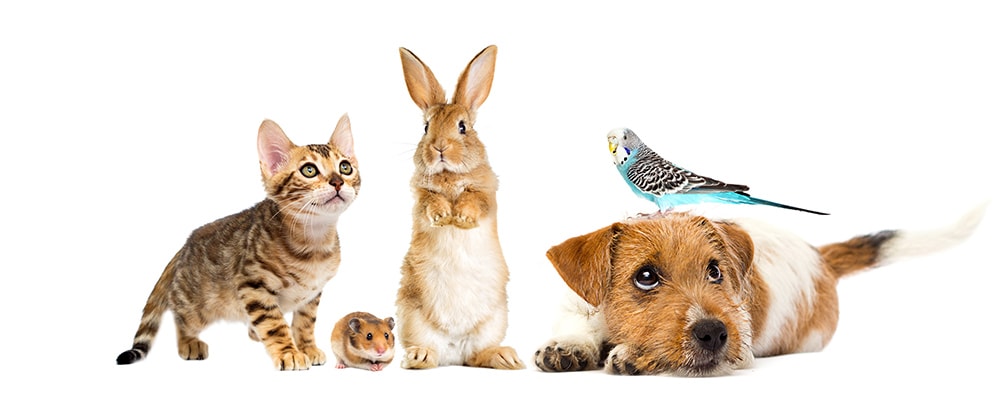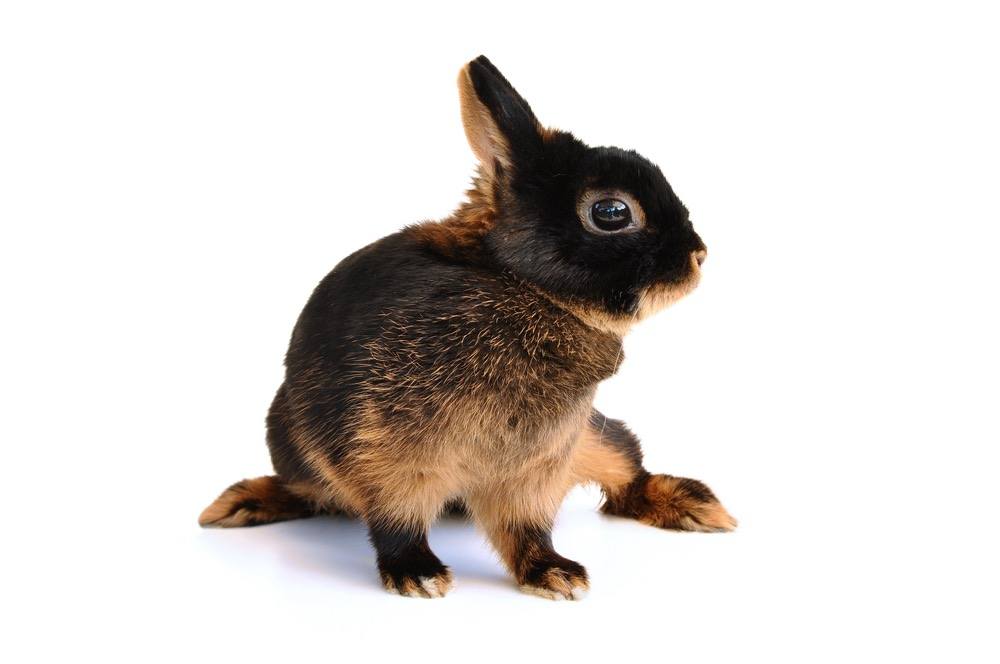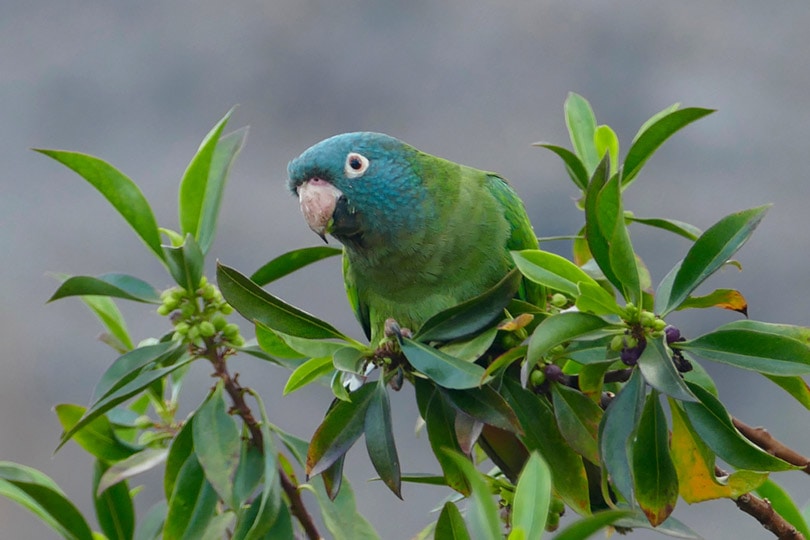VET APPROVED

The information is current and up-to-date in accordance with the latest veterinarian research.
Learn more »Click to Skip Ahead
Before adopting a pet, think about how much time you have to commit to caring for them and plan accordingly. You might already have a dog and want to add another animal but realize that another dog would be too much.
If you and your family are looking for a low-maintenance pet that is easier to care for and costs less to maintain, check out these 17 small pets.

Please note that although these pets may be considered low-maintenance, all pets require attention, socialization, time, dedication, veterinary care, and an appropriate environment. No pet is truly maintenance-free, and while keeping pets is a very rewarding hobby, the decision to adopt one shouldn’t be rushed or taken lightly.
Always check the laws where you live before adopting an exotic pet, as some may require licenses to acquire and keep as pets. Others might not be legally obtainable. Wild species do not make good pets, and their purchase is considered a choice made in poor judgment since it perpetuates the cycle of wild animals being unethically captured for illegal pet trades.
The 4 Low-Maintenance Rodent Pets
1. Hamsters
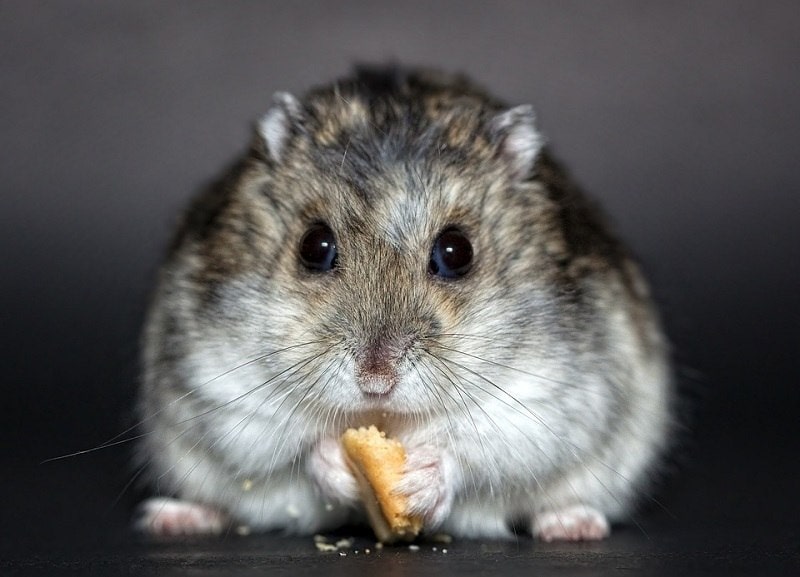
Hamsters are one of the small pets that many people think of immediately when asked to name a low-maintenance pet. They are in the rodent family and eat an omnivorous diet.
Hamsters are relatively small, at only 5 to 7 inches long. They live an average of 2–3 years, and they are solitary creatures, meaning it’s no big deal if you get just one individual. As they are highly territorial, it is best to house them alone. Hamsters are distant relatives to the Guinea pig. They might take a while to warm up to human handling, but eventually, they begin to crave it.
Hamsters make great, quiet pets that can easily feed, drink, and groom themselves. Nonetheless, they still benefit from human interaction, and neglecting them isn’t advised. Keep their cage cleaned out, and remember to feed them and check their water each day.
2. Guinea Pigs
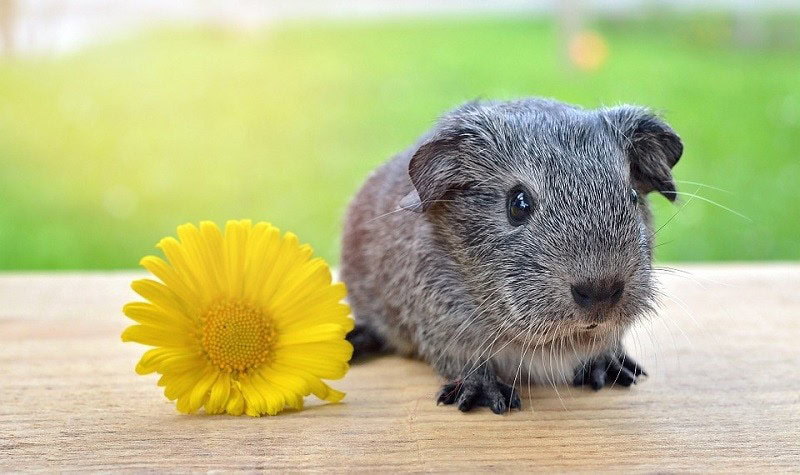
Guinea pigs require similar care as hamsters, but they tend to be friendlier from the start. They are delicate creatures, although they are larger than hamsters. Since that is the case, it is sometimes better for them to be pets for older children since rough handling can hurt them.
Guinea pigs live an average lifespan of about 4 to 5 years and prefer not to be alone. If you adopt a guinea pig, always consider adopting at least two to keep them company. In some countries, keeping them alone is against the law.
Guinea pigs are natural herbivores and need a plant-based diet. They need more daily love than a hamster and weekly cage maintenance to keep them clean and healthy.
3. Chinchillas
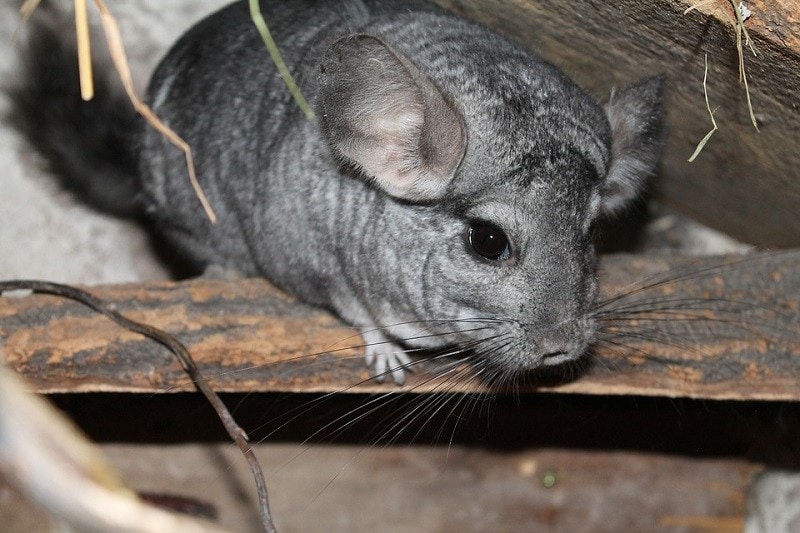
Chinchillas are arguably the cutest of all the low-maintenance pets featured on our list. They also need a friend in their enclosure for companionship, and doing so can actually increase their lifespan. They live longer than other small pets, on average, around 10 years.
Part of the reason chinchillas make such a good low-maintenance pet is that they prefer not to be held that often. They like to feel loved but don’t need a lot of time being carried around the home.
- They require extensive exercise and frequent dental care from a veterinarian.
- Chinchillas have the most dense fur of all mammals but lack the ability to sweat. Temperature control is very important when keeping them as pets.
- They rely on dust baths to keep themselves clean (they do not bathe in water). It is mandatory to ensure your chinchilla has access to dust baths.
- Some individuals are extremely social and may require extensive attention from their human caregivers on a daily basis.
They need a diet made specifically for a chinchilla. Chinchilla food is available at pet stores and online retailers.
4. Rats
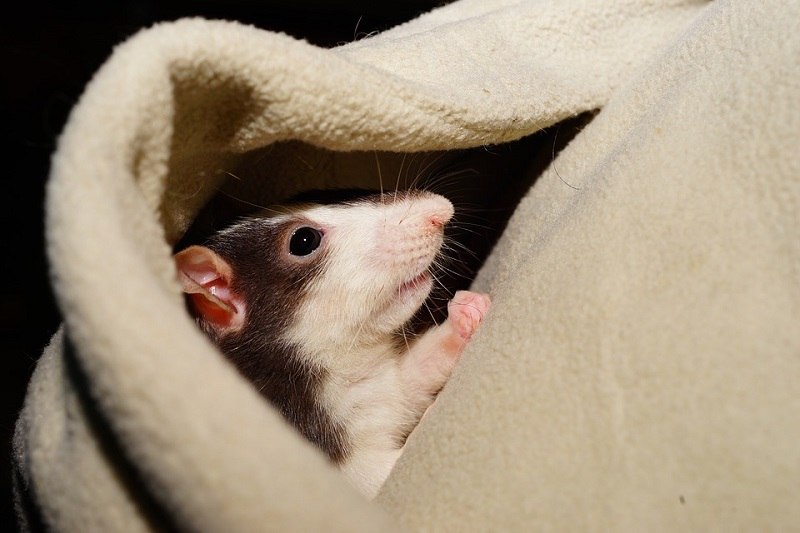
Rats are at the top of any list of low-maintenance pets. They are one of the smarter animals in this category and make for quite interesting pets.
Some people think of rats as creatures that slink around the sewers. However, pet rats are clean creatures. They take a lot of time grooming themselves and even prefer their food organized in neat piles in their enclosure.
Norway rats are one of the more common species that you find as pets. They have a shorter life span than some of the other animals here, living only 2 or 3 years. They grow anywhere from 9 to 11 inches long from head to tail. Your interaction with them can be as much or as little as you want since they are adaptable. Please be mindful that rats that don’t interact with humans enough might be a biting hazard for children.

The 3 Low-Maintenance Reptile Pets
1. Snakes
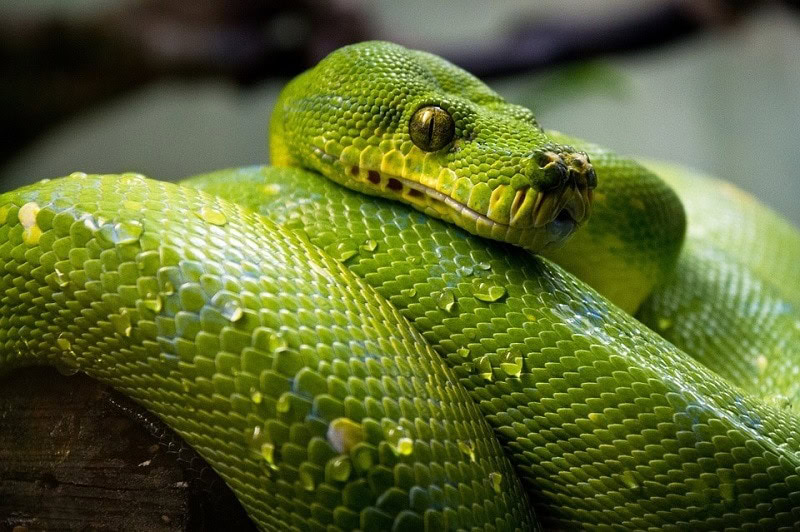
Although reptiles of any sort might not be everyone’s cup of tea, snakes stand out. Not all snakes are venomous, and it is generally recommended to find non-venomous snakes as pets. Most pet shops won’t sell venomous snakes, anyway, so you shouldn’t worry about accidentally picking the wrong one.
Common pet snake species include the corn snake, gopher snake, ball python, California kingsnake, and rosy boa. Consider their overall temperament and the size they will grow into as adults.
2. Leopard Geckos
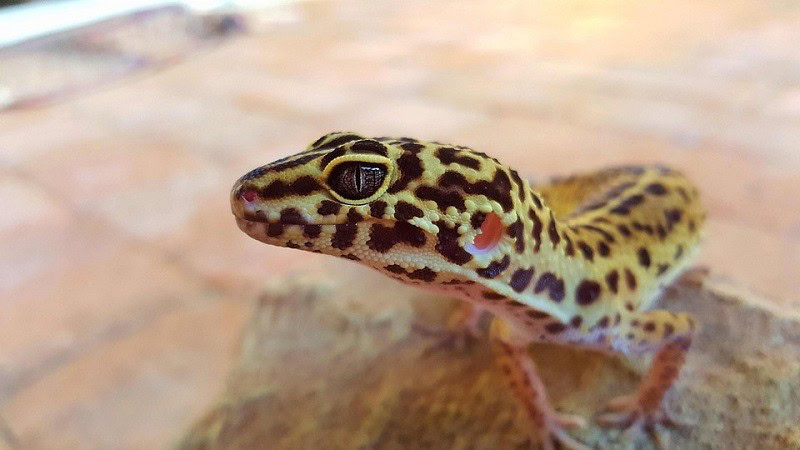
Geckos are a neat pet for a family to own or a single person. Leopard geckos are perfect for apartment-dwellers and have a docile nature for kids to play with calmly.
Leopard geckos do not require much daily care. You can keep several in a 15- to 20-gallon tank. They feed on a diet of insects, primarily crickets and mealworms, that you can buy in a pet store.
Compared to other small pets with relatively short lifespans, geckos can live for 20 years or more. If you are looking for a long-term commitment, they are there for you.
3. Turtles
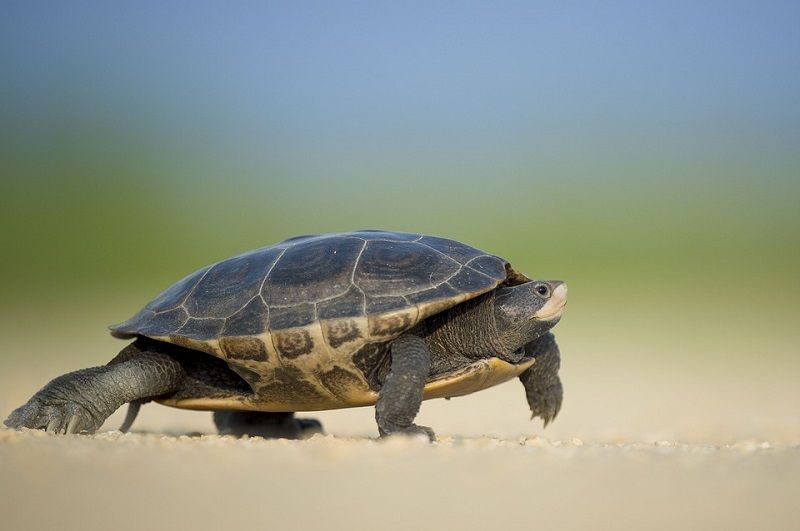
Another small pet that is low-maintenance and long-living is the turtle. There are many species of turtles that you can consider as pets. It all depends on what you are looking for in terms of size, lifespan, enclosure needs, and daily habits.
Since they stay small and live for more than 30 years, one of the easiest turtles to keep is the painted turtle. They can fit into a regular terrarium and don’t need to be fed daily. You can feed them insects, dark greens, and fish four or five times a week.
One of the most significant factors in caring for a turtle is maintaining the water temperature and keeping their enclosure clean. Turtles do not need much handling, and most of them don’t enjoy it.
- Related Read: 15 Best Pet Turtles and Tortoises (With Pictures)

The 5 Low Maintenance Sea Life Pets
1. Betta Fish
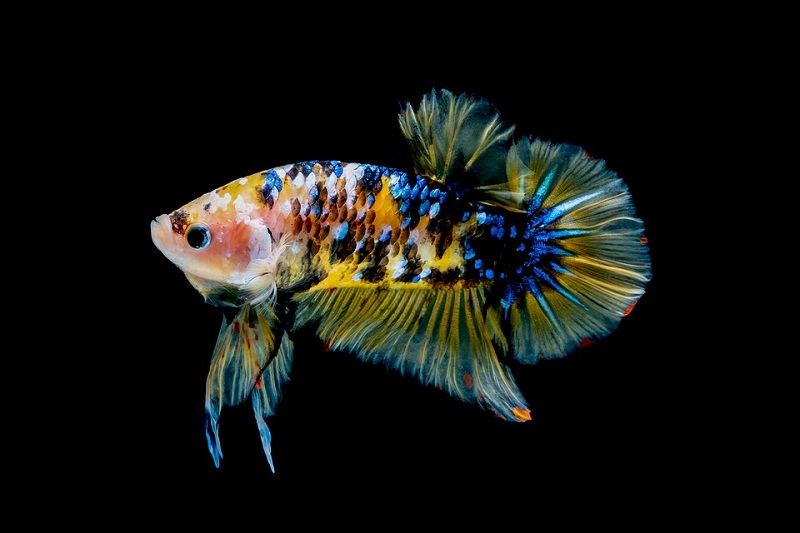
For some people, a fish is the ideal low-maintenance pet. However, even though a fish doesn’t need coddling and personal affection, they require quite a bit of maintenance.
Getting a freshwater fish is significantly easier than maintaining a saltwater aquarium. If you use a freshwater tank, you can adopt a Betta fish. They are territorial, so they do not prefer any other fish in their aquarium. They can be kept in a smaller space and live for many years if cared for properly. Since there is only one fish in an enclosure, more time can go between cleanings.
2. Hermit Crabs
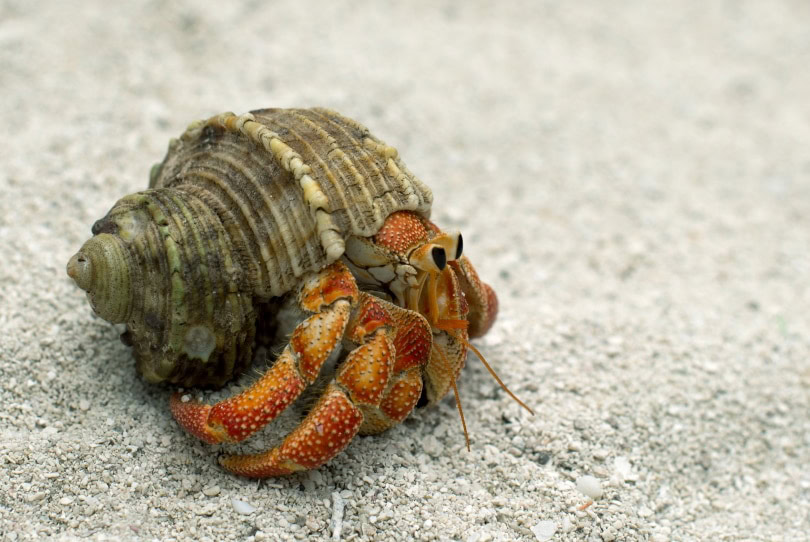
Hermit crabs are strange creatures that are commonly kept in an enclosure with other sea life and will happily drag their shell around for 7 to 10 years.
Hermit crabs can grow up to 6 inches long, and one of the most in-depth facets of keeping them healthy is finding the right shells for them to fit into as they outgrow their old ones. They need a terrarium with at least 5 gallons of space placed in an area with indirect sunlight.
Even cleaning the hermit crab’s terrarium is simple. They are not messy creatures and prefer to be left alone for the most part. Their diet is small pellets and powdered food, so you won’t have to work hard to keep up with it.
3. Sea Monkeys

Sea monkeys went through an odd marketing campaign in the late 1990s and early 2000s as an “instant pet” that you could hatch from a powder. They were beloved by kids, and for a while, nobody could answer the question of precisely what they were.
Sea monkeys are brine shrimp, almost microscopic and extremely low-maintenance. They make the perfect first pet for most kids because they are fun to watch yet require little to no work. They need to be fed about twice a week and have a gentle tank wash once a month.
Sea monkeys, or brine shrimp, can live for up to 2 years and are a low-cost investment.
4. Snails
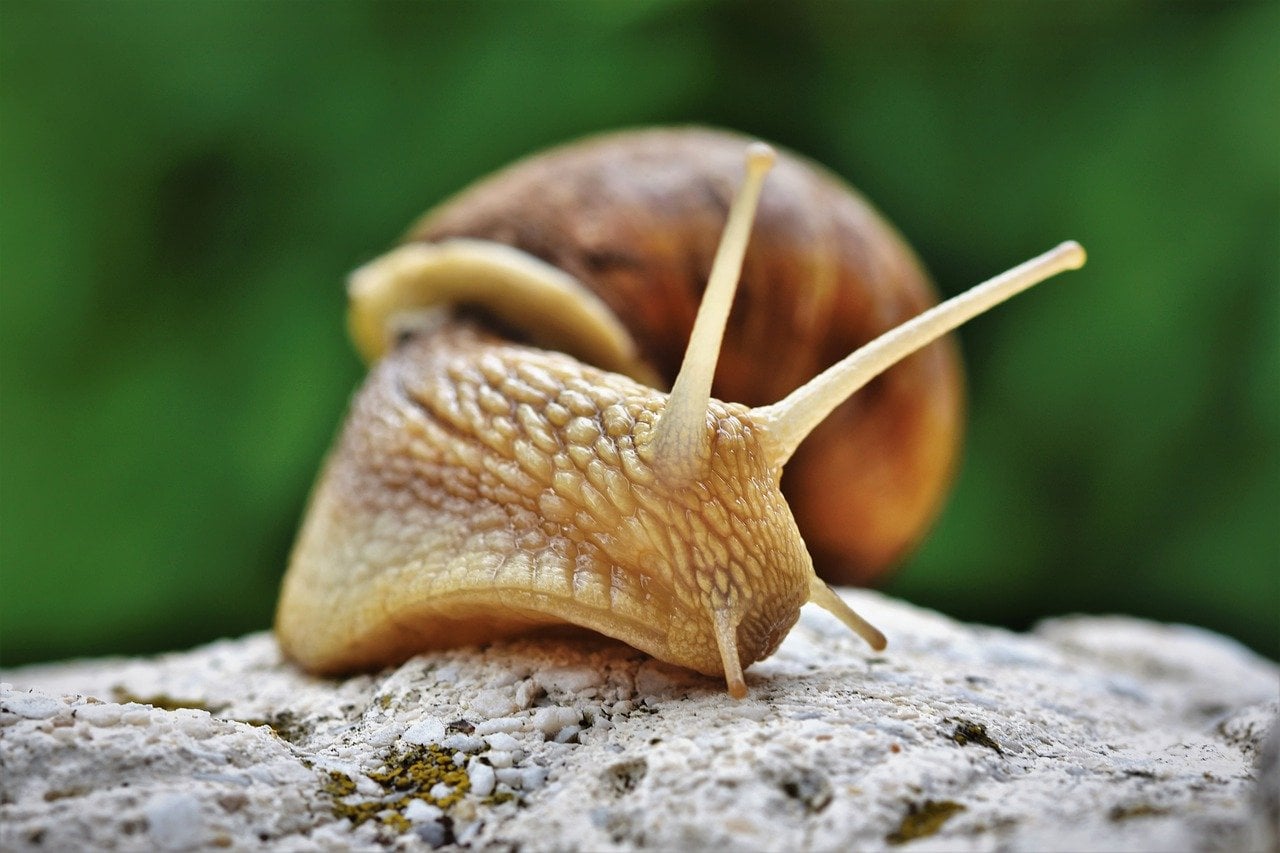
Snails are very small pets that are incredibly easy to care for and have a long lifespan. They can live between 10 and 15 years if cared for properly.
Their care entails a terrarium with a couple of inches of soil on the bottom and a feeding every few days. You can serve small bits of carrots, apples, cucumbers with chalk, cuttlefish bone, and eggshells to keep them and their shells happy and healthy.
You’ll clean the terrarium about once a week by spraying down the walls with water to clear off the mucus trails.
Some snails are aquatic and must be kept in an aquarium. Some aquatic setups allow for snails and fish to be housed together. However, be mindful that many fish may attempt to hunt snails, including cichlids and some loaches. Also note that some snails hunt other snails (for example, assassin snails will hunt and kill other snails in an aquarium).
- Related Read: Do Snails Make Great Pets?
5. African Dwarf Frogs
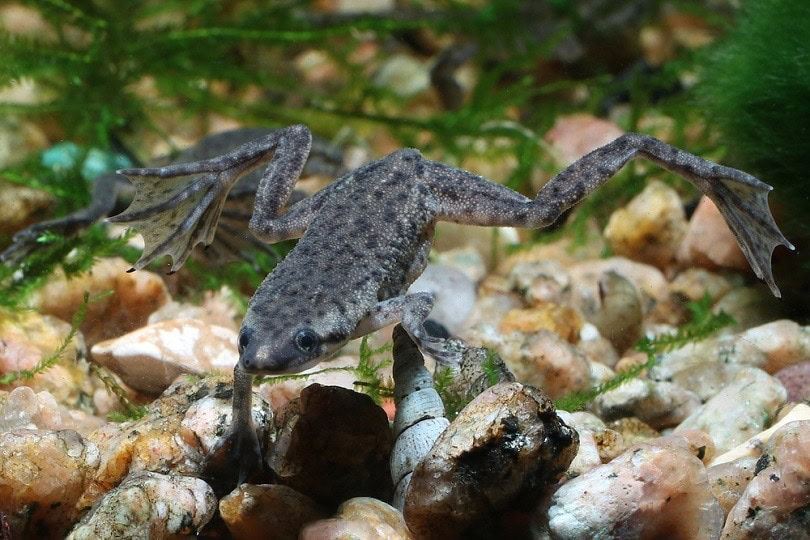
The African Dwarf Frog is an interesting little creature that can live in aquariums with fish.
They only grow to about 1.5 inches long and have an average lifespan of up to 5 years. They eat mostly bloodworms and brine shrimp, so don’t keep them with your sea monkeys.
The most important aspect of keeping a dwarf frog happy is maintaining the water quality. It should be checked at least once a week and changed about twice a month.
- Related Read: 16 Best Pet Frogs for Beginners (With Pictures)

The 3 Insect/Arachnid Low-Maintenance Pets
1. Tarantulas
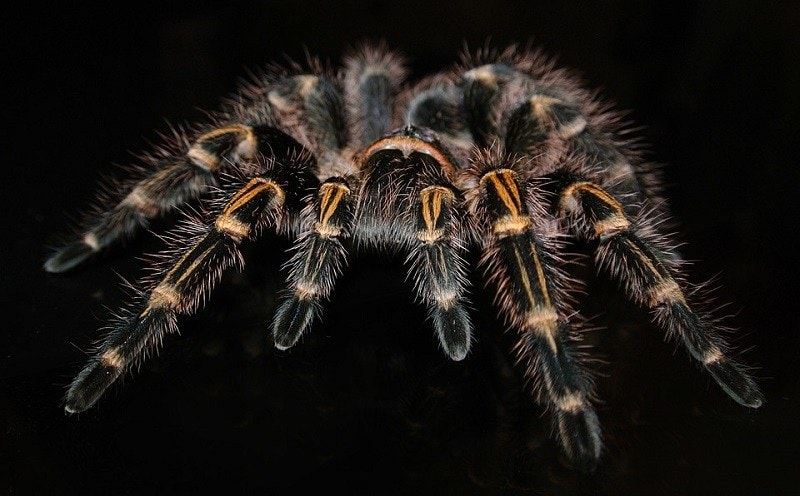
A pet that some people are fascinated by, while other people loathe, is the tarantula. These large, hairy spiders can grow up to 10 inches in diameter, while others stay small, growing only 2 inches.
Although there are a wide variety of tarantula species, most live for about 7 years. They are easy to care for because they don’t need much personal time. Instead, they need a suitable terrarium where they can roam and eat live insects. This can include crickets, super worms, mealworms, and roaches.
They need to be kept from sunlight, and their enclosure should be cleaned once every couple of weeks.
- Related Read: Brazilian Black Tarantula
2. Praying Mantis
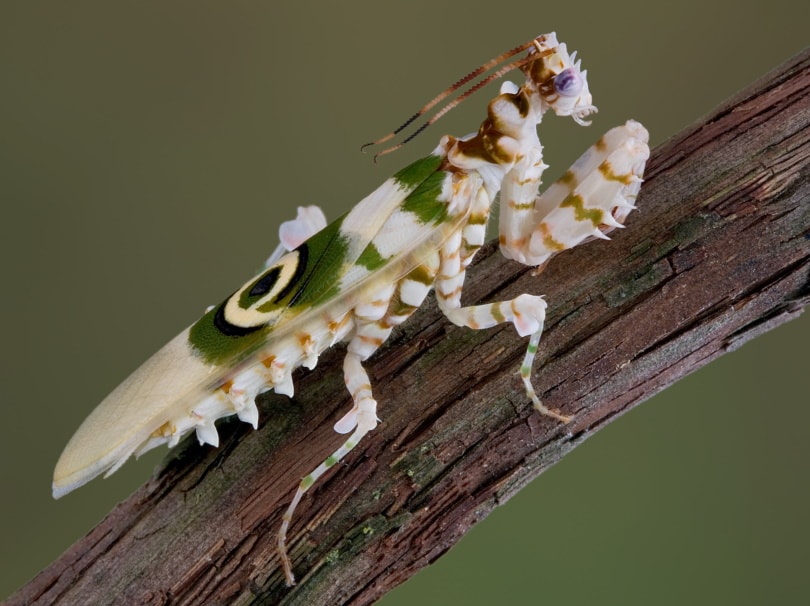
A praying mantis is a surprisingly engaging pet. They can sit still for hours on end and then suddenly turn their heads and attack an insect left in their terrarium. Compared to some other insect species, they are quite colorful.
In captivity, a praying mantis lives for around 1 year and only requires a small tank because they do not move around too much. They eat various other smaller insects, such as fruit flies, moths, smaller mantids, and sometimes crickets if they are large.
One of the best things about these creatures is that they are often free. Go for a trek outside, and find one to adopt on a tree or in your garden.
3. Scorpion
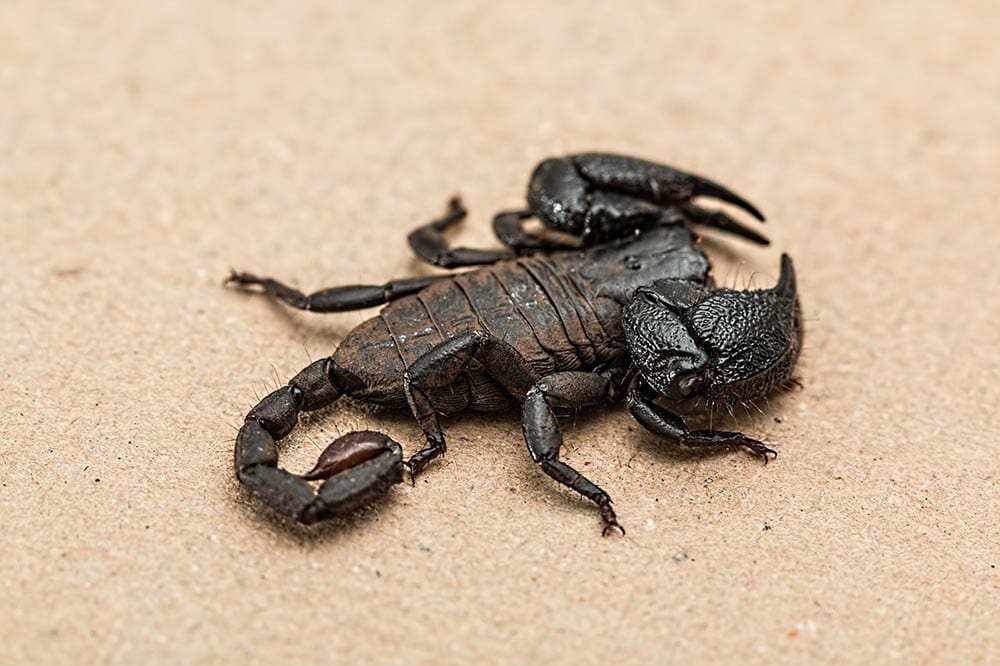
Owning something as simple as a bug will not satisfy someone who wants to feel like they have a unique pet to care for. A scorpion’s pet care is similar to that of an insect but with the added benefit of being a bit creepier.
They can grow up to 8 inches long and can live 2 to 6 years. An adult scorpion only needs feeding every other day. They live off a diet of mealworms, crickets, and wax worms.
The most significant factor in caring for a scorpion is the temperature of their enclosure. They need a hot tank kept consistently between 80 and 90 degrees Fahrenheit.

The 2 Other Small Pets that are Low Maintenance
1. Rabbits

Rabbits are small mammals that are popular pets because they come in many different sizes, colors, and fur types. They have long ears and fluffy tails, and their trademark ability to hop using their hind legs makes them easily recognizable.
Smaller rabbits don’t like being handled and, therefore, make a good choice when you feel like you may not have enough hands-on time with your pet. They are often content in their hutch, can easily adapt to outdoor or indoor setups, and, depending on their temperament, may even get along well with other rabbits. They are also quiet and an option to consider if pet noise is a concern where you live.
Though rabbits, like all pets, require veterinary care (especially dental care), they are still somewhat easier to care for when compared to pets that require frequent social interactions. In addition, because rabbits can be litter trained, cleaning up after them might be easier than pets who choose to relieve themselves wherever they want to. They tend to live for 5 to 10 years, but larger species usually have shorter lifespans.
2. Songbirds
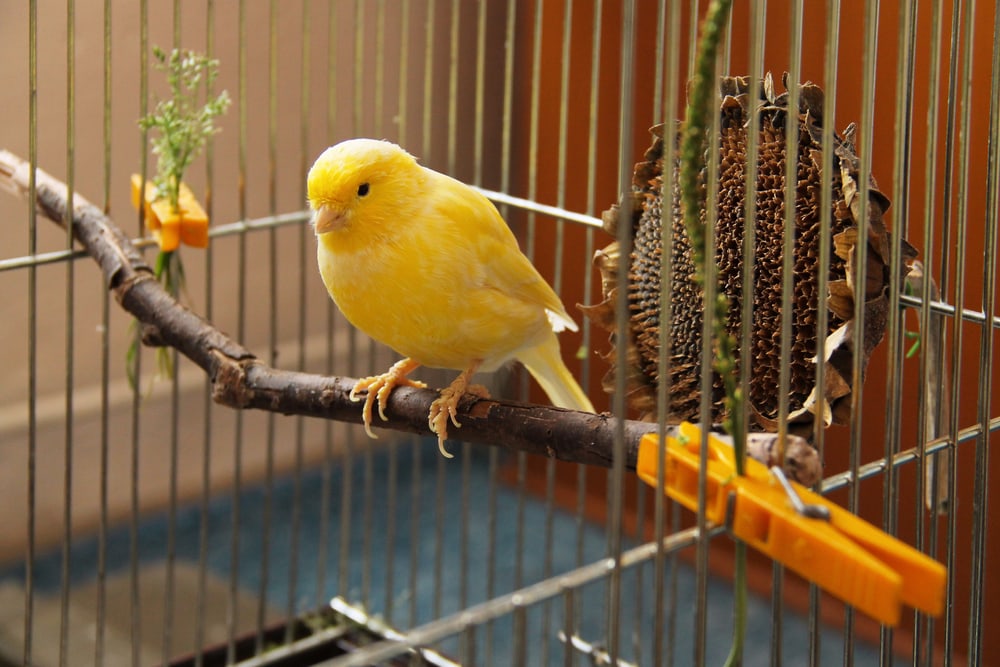
If you’re looking for a colorful, vocal pet, look no further than a songbird. Songbirds are a popular choice for bird enthusiasts who feel like they don’t have the time, confidence, or experience to take care of parrots. Examples of songbirds include canaries or finches.
Songbirds require a proper cage setup, a species-appropriate diet, and regular checkups from a veterinarian, but generally need far less social interaction than a parrot. They can also easily be housed with other conspecifics and can be an absolute joy to observe as they sing, chirp, bathe, and fly around their enclosure all day. They sleep at night and won’t bother you while you sleep. They also quickly adapt to large aviaries, where they can be housed in flocks. Depending on their species, they can live 5–10 years.
Featured Image Credit: Happy monkey, Shutterstock
